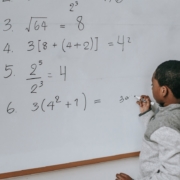Printable Lesson Plan on Dividing Fractions
Lesson Title:Dividing Fractions
Lesson Objective: Students will be able to divide fractions and understand the concept of dividing fractions by flipping the second fraction (divisor) and multiplying it.
Materials:
Introduction (10 minutes): Begin the lesson by reviewing the concept of fractions. Write the fraction 3/4 on the board and ask the students to identify the numerator and denominator. Explain that the numerator represents the number of parts being considered, and the denominator represents the number of parts in the whole. Next, write the fraction 1/2 on the board and ask the students how they would divide 3/4 by 1/2. (They should understand that they need to divide the numerator of 3/4 by the numerator of 1/2 and the denominator of 3/4 by the denominator of 1/2.)
Direct Instruction (20 minutes): Using the fraction strips or manipulative, demonstrate how to divide fractions. Write the fractions 3/4 and 1/2 on the board and show how to divide them by flipping the second fraction (divisor) and multiplying it. (3/4 ÷ 1/2 = 3/4 x 2/1 = 6/4 = 3/2) Explain that when we divide fractions, we flip the second fraction (divisor) and then multiply it by the first fraction (dividend).
Guided Practice (20 minutes): Distribute the worksheets and have the students practice dividing fractions on their own. Walk around the room and assist as needed.
Independent Practice (20 minutes): Provide the students with a set of mixed fractions and have them divide them and simplify the quotient if necessary.
Closure (10 minutes): Have the students share one thing they learned about dividing fractions during the lesson.
Assessment: Monitor the students during independent practice and provide feedback. Collect and grade the worksheets for accuracy.
Note:










